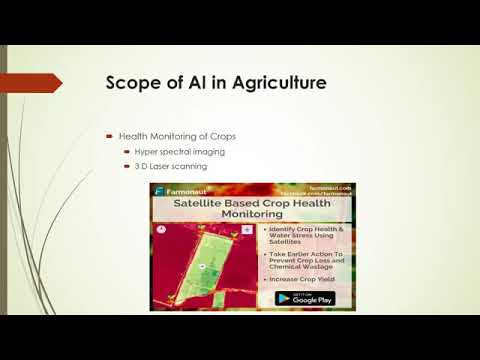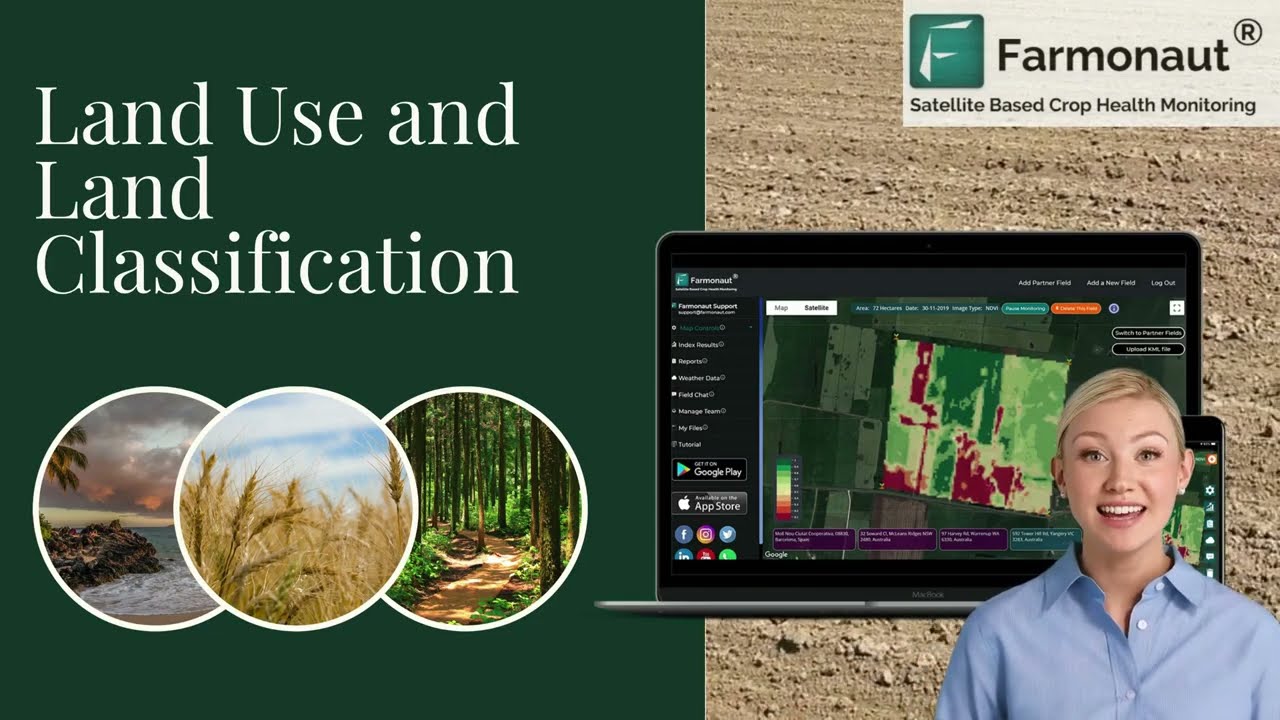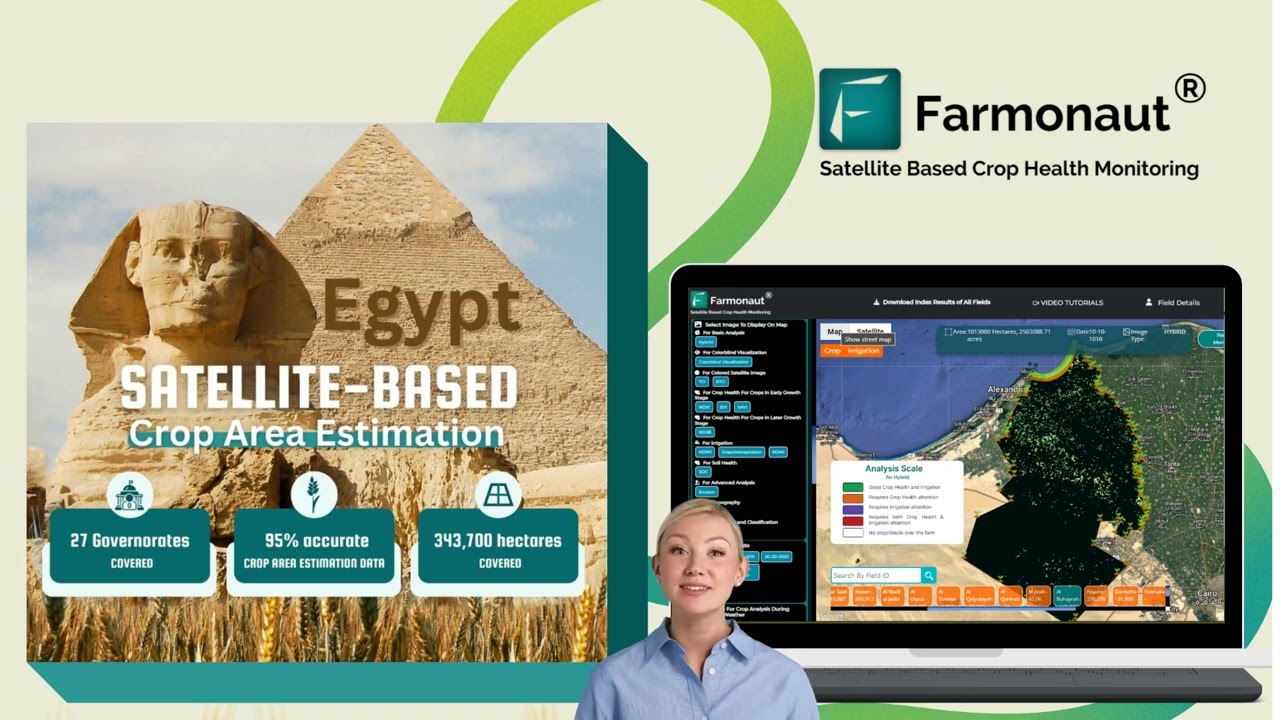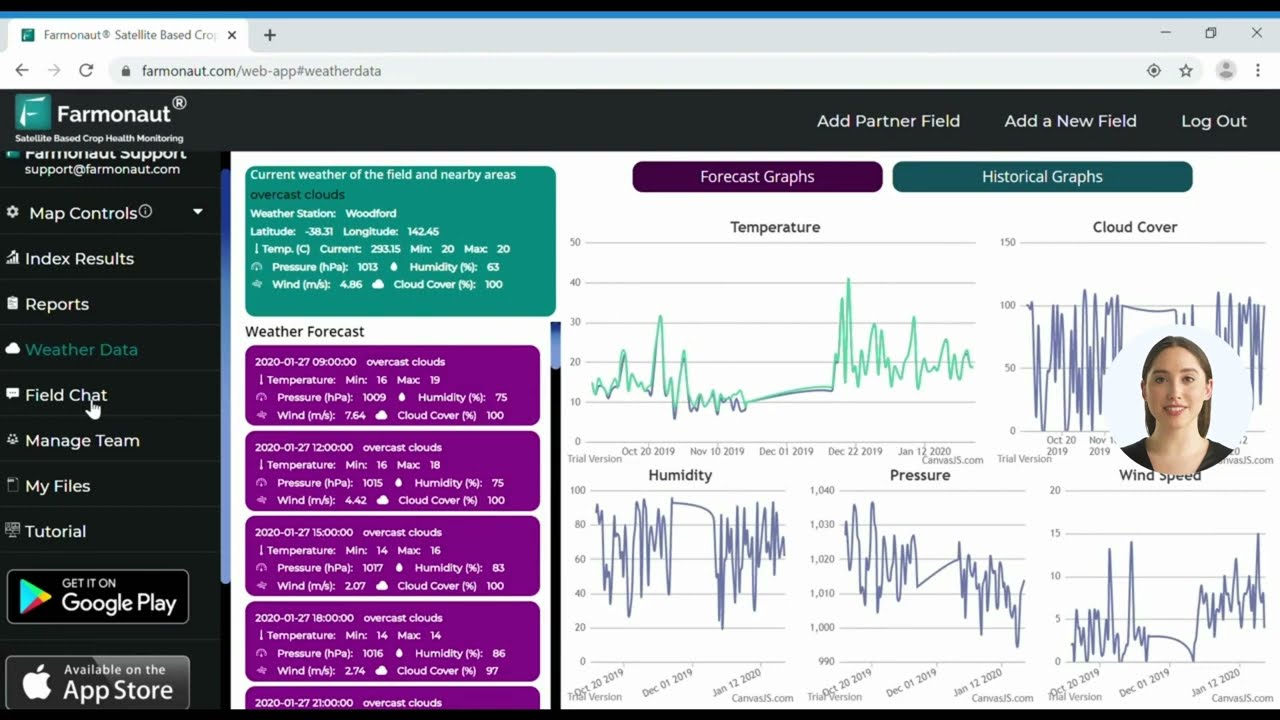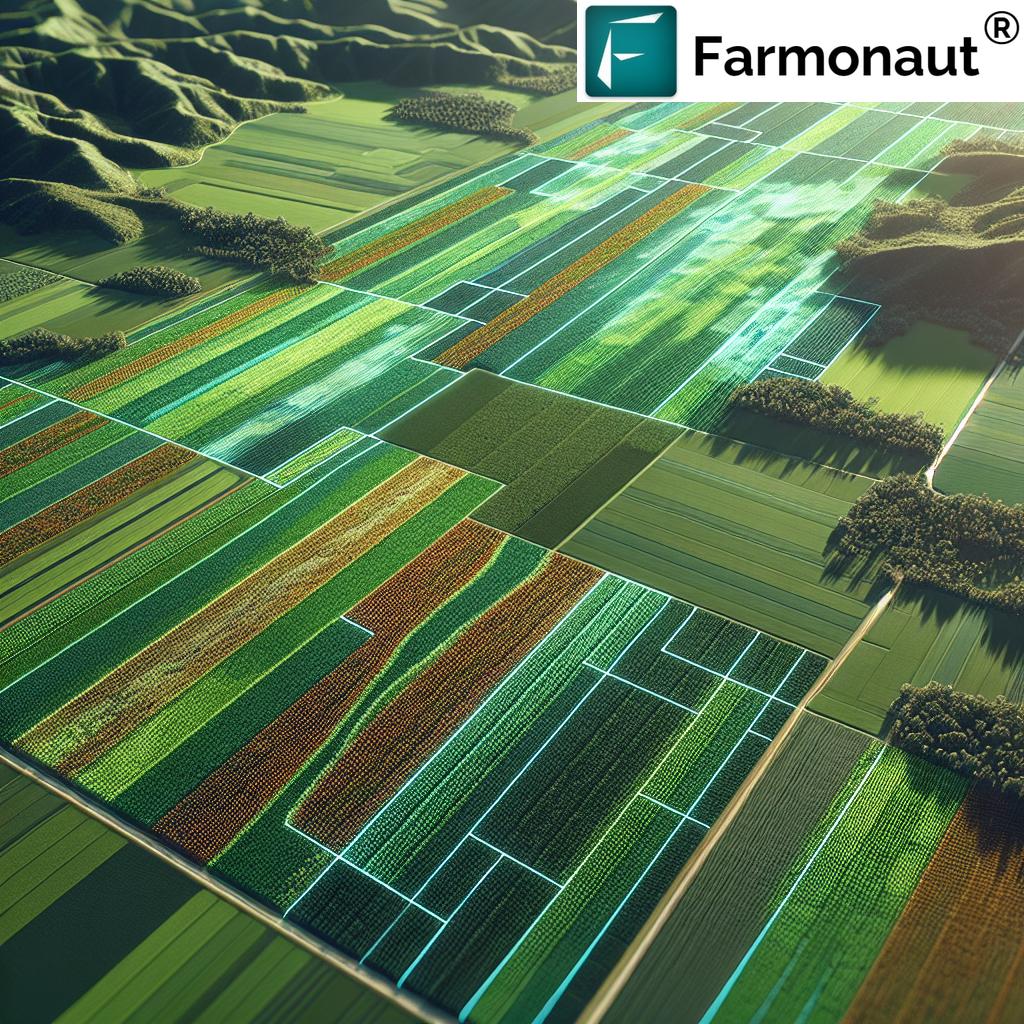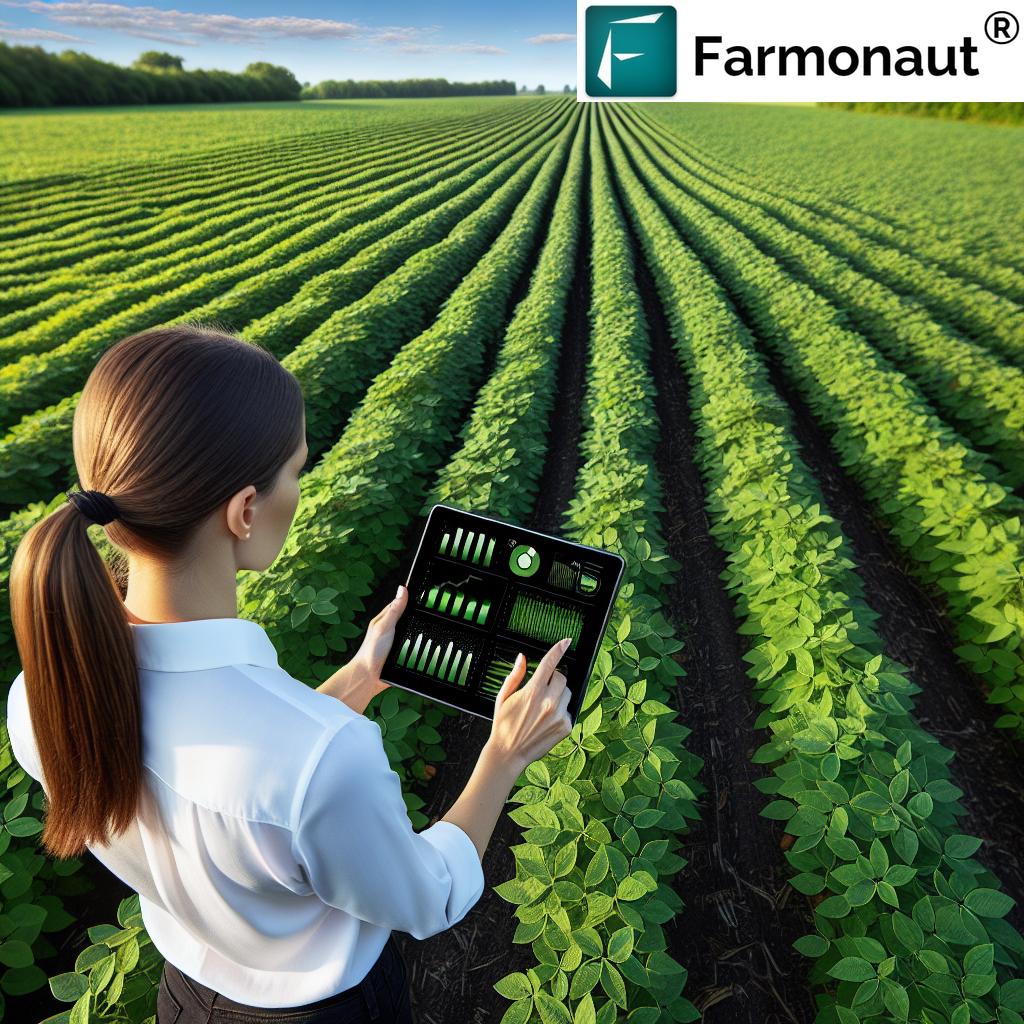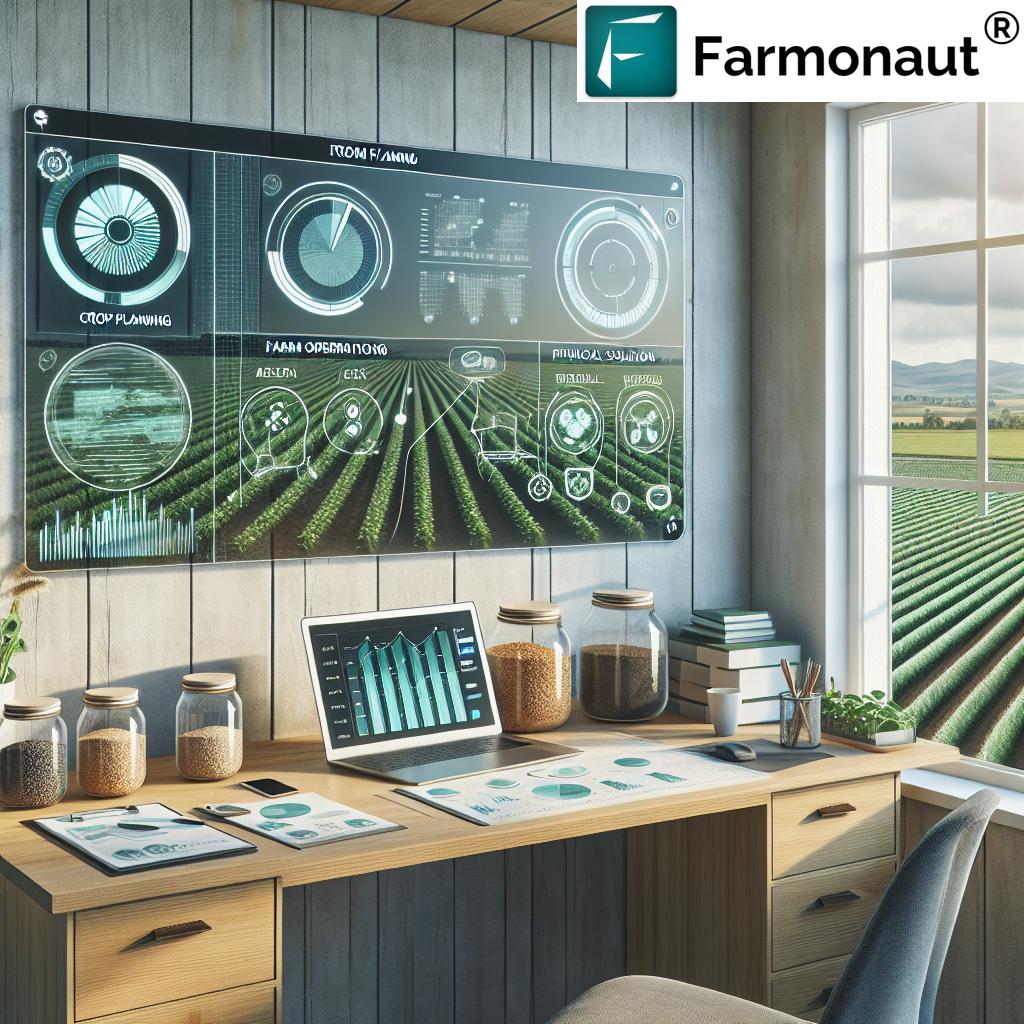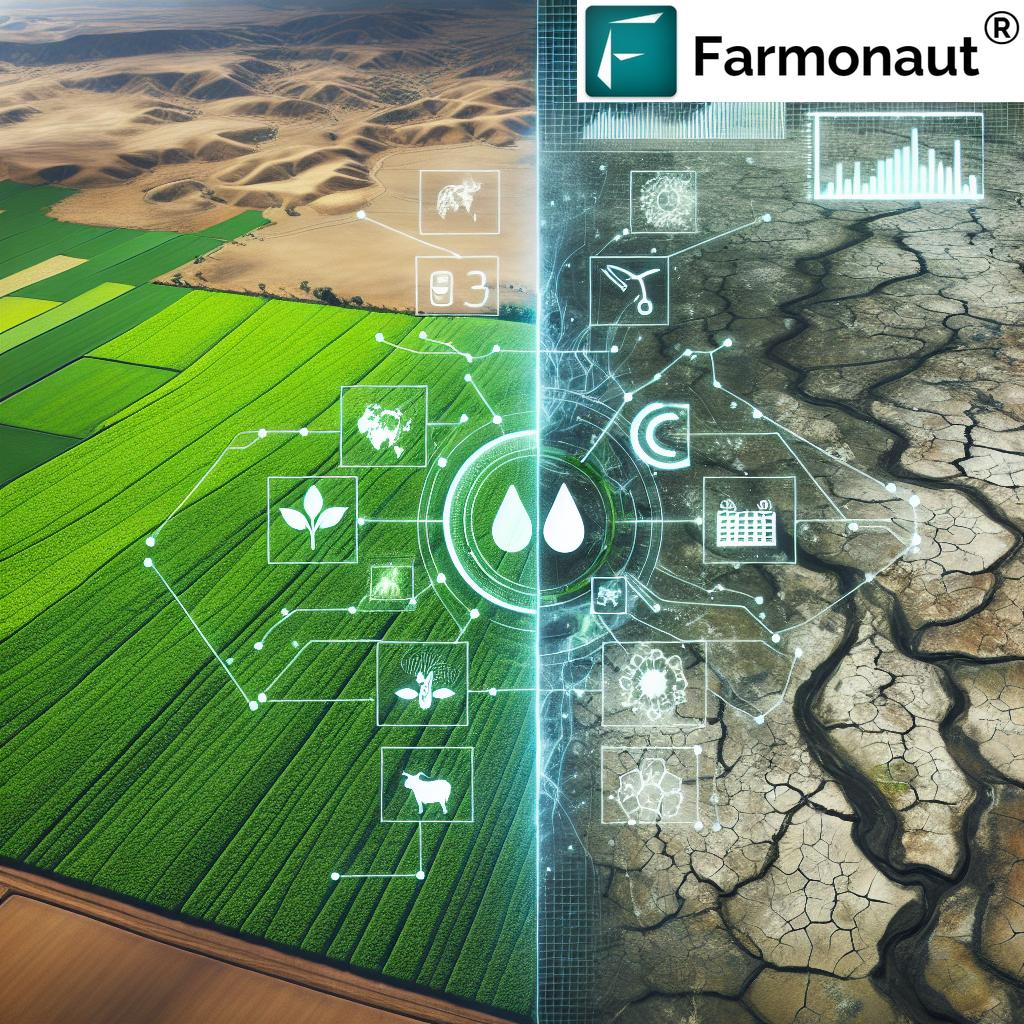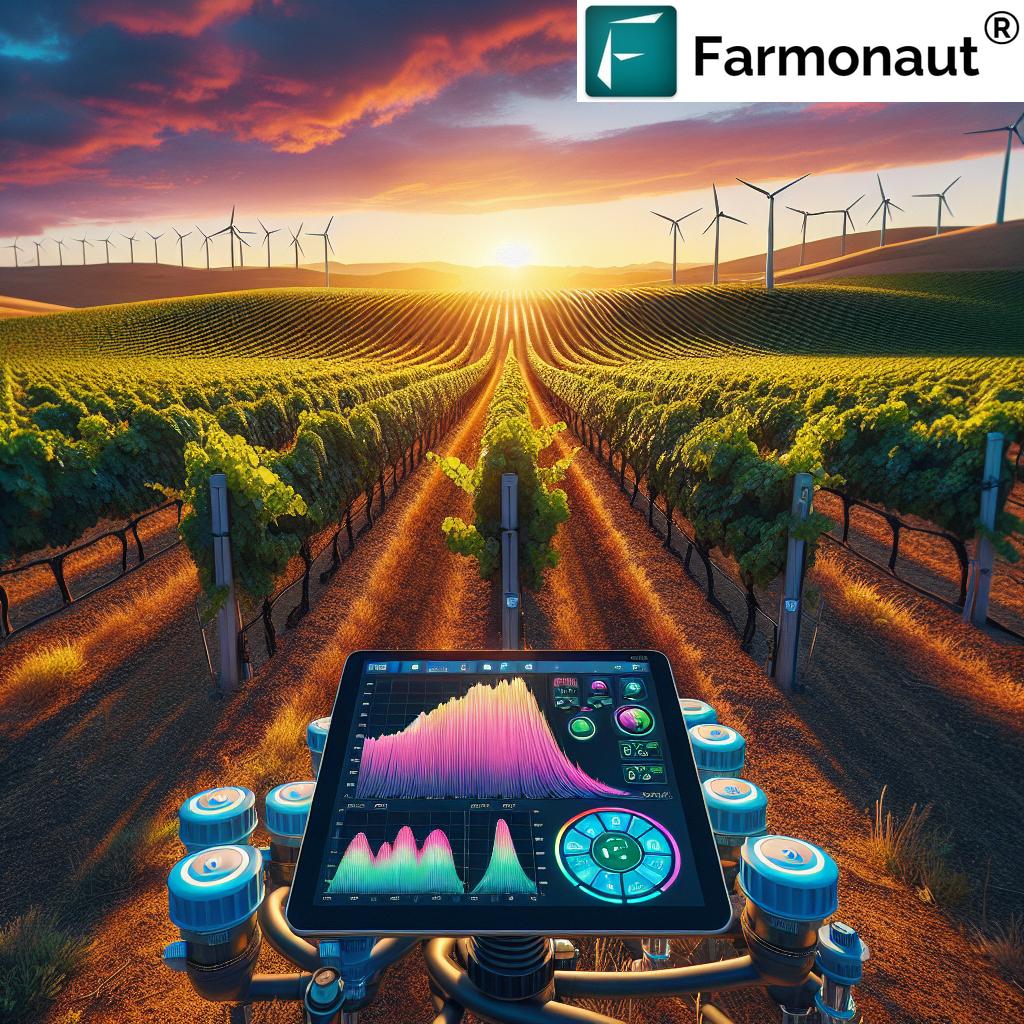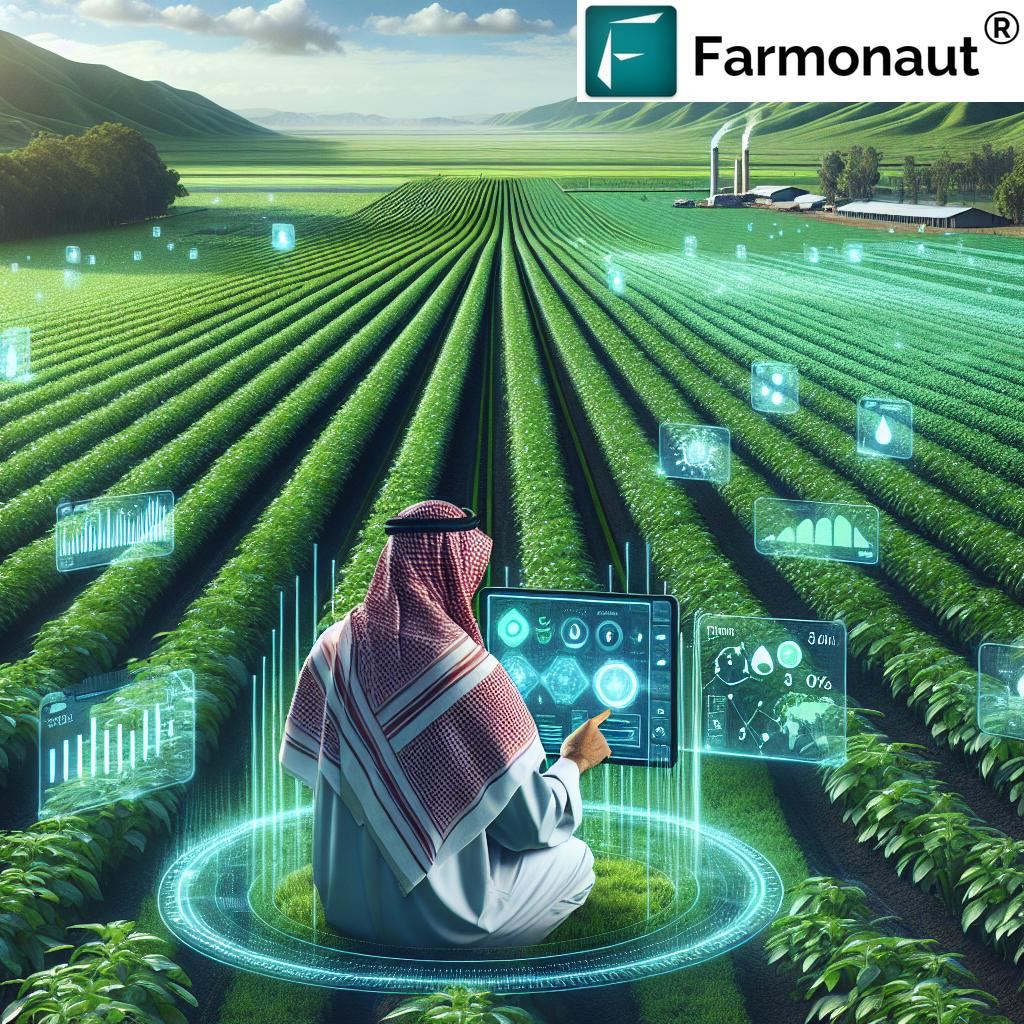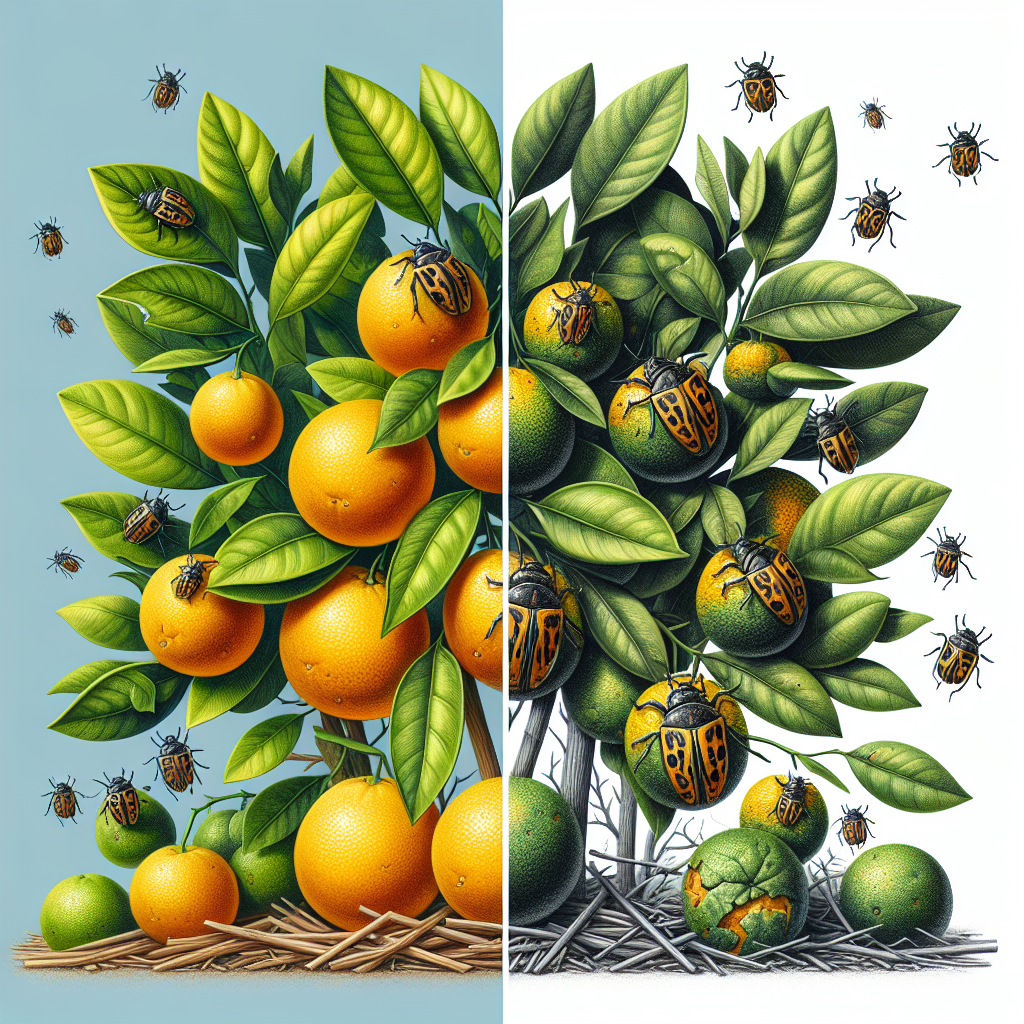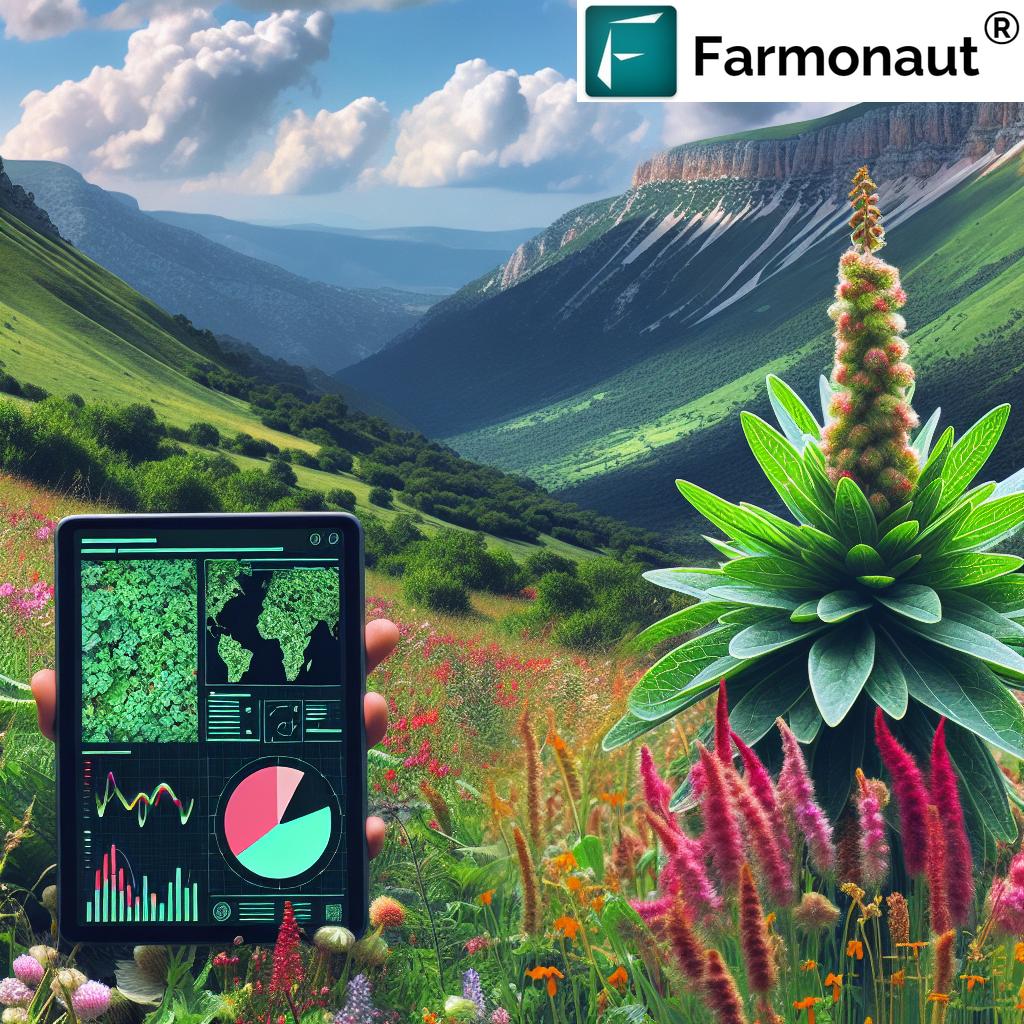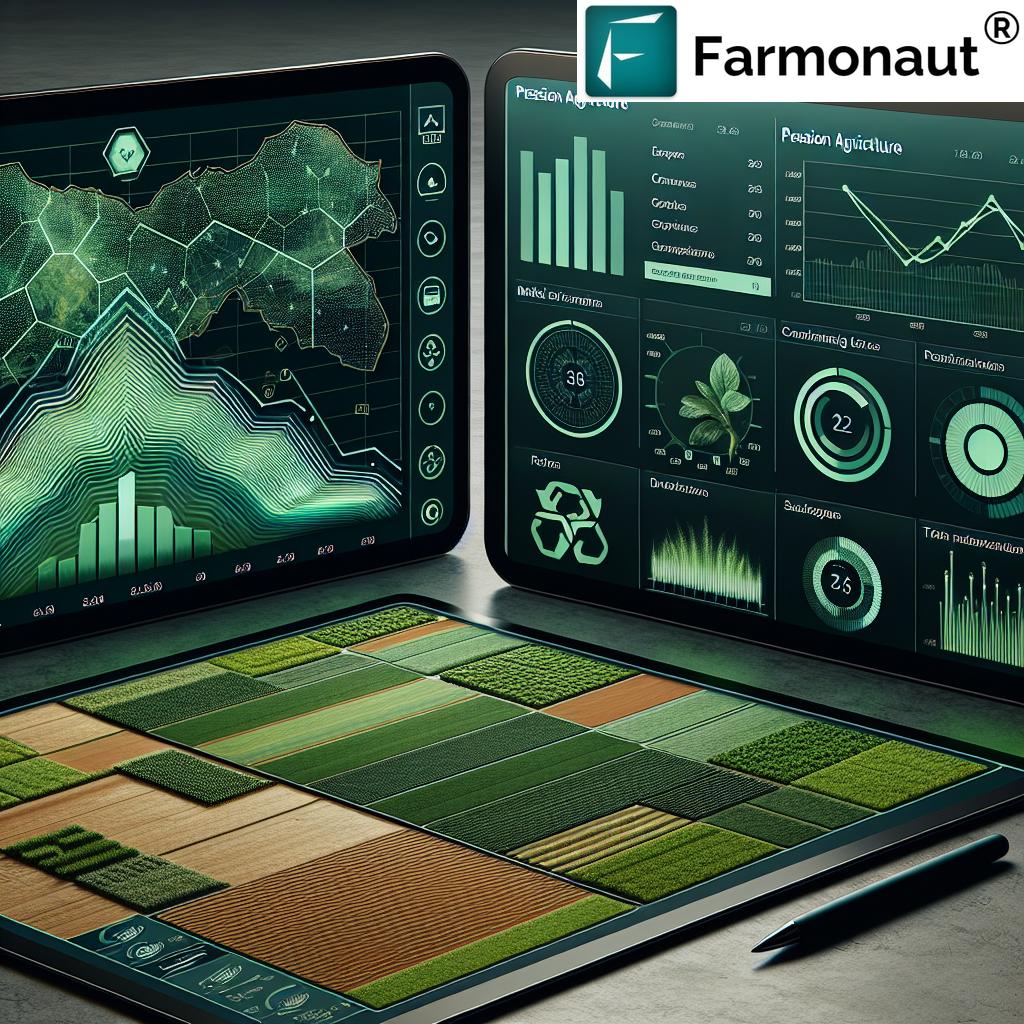Table of Contents
- Introduction: AI in Farm Management
- Why AI Matters in Modern Agriculture
- Comparative Summary Table: 7 AI Applications
- 1. Precision Agriculture
- 2. Predictive Analytics in Farming
- 3. Automated Crop Monitoring
- 4. Smart Irrigation Systems
- 5. Robotic Harvesting
- 6. Livestock Monitoring and Management
- 7. AI-Powered Farm Management Platforms
- Farmonaut: Advanced Farm Management Solutions
- Benefits of AI in Agriculture
- Challenges in Adopting AI in Agriculture
- FAQ: AI in Farm Management
- Conclusion: AI Transforming Farm Management
“AI-powered crop monitoring can increase farm yield by up to 20% through precise data analysis.”
AI for Farm Management: 7 Powerful Ways to Boost Efficiency
Artificial Intelligence (AI) in agriculture is revolutionizing how we manage farms, monitor crops, and optimize every aspect of production. With precision farming and advanced data analytics at the forefront, AI-driven technologies empower us as farmers, agribusiness professionals, and agricultural stakeholders to boost efficiency, enhance sustainability, and drive operational excellence in the face of ever-changing challenges. In this guide, we explore seven transformative ways AI is enhancing modern farm management and why adopting these innovative solutions is essential for the future of our fields.
Why AI Matters in Modern Agriculture
As global food demands rise and environmental concerns intensify, integrating AI in agriculture becomes more than a modern upgrade—it’s a strategic necessity. AI helps us analyze weather, predict yields, monitor pests, and optimize every input from water to fertilizer. Robust data management platforms and AI-powered machinery now bring precision to large and small farms alike, reducing labor costs and making resource allocation smarter and more sustainable.
Let’s dive into a comparative summary of the top applications.
Comparative Summary Table: 7 AI Applications in Farm Management
| AI Application | Key Benefit | Estimated Efficiency Increase (%) | Example Technology |
|---|---|---|---|
| Precision Agriculture | Accurate input use & resource allocation | 15–25% | Autonomous Tractors, Satellite GPS |
| Predictive Analytics | Data-driven planting and harvesting decisions | 15–30% | AI Models, Weather Analytics |
| Automated Crop Monitoring | Early detection of crop issues and timely action | 15–20% | Drones, Computer Vision Sensors |
| Smart Irrigation Systems | Reduction in water use, optimal crop hydration | 15–25% | IoT Soil Sensors, Automated Controllers |
| Robotic Harvesting | Consistent, damage-free, and timely harvest | 10–20% | AI Harvesters, Agribots |
| Livestock Monitoring | Early disease detection and welfare improvements | 10–15% | Image Recognition, Wearable Sensors |
| Farm Management Platforms | Centralized data and resource management | 20–35% | Cloud Software, Satellite Apps (e.g., Farmonaut) |
1. Precision Agriculture: The Backbone of AI in Farm Management
Precision agriculture is where we realize the true potential of AI for farm management. By equipping our fields with autonomous tractors, AI-powered harvesters, and GPS-enabled technology, we’re able to map vineyards, optimize planting, and monitor every corner of our land with remarkable accuracy. This means every drop of water, every grain of fertilizer, and every minute of labor delivers maximum return.
- Autonomous machinery automates repetitive tasks like sowing, spraying, and harvesting, enabling us to manage large areas more efficiently with less fatigue and cost.
- Innovative AI engines analyze datasets from weather stations, sensors, and satellites, guiding our decisions on when and where to act.
- High-precision GPS ensures consistent seed placement and reduces overlaps, supporting sustainable practices and lowering fuel use.
Farmonaut’s solutions make precision agriculture accessible and affordable. The Large-Scale Farm Management platform empowers large farms and plantation managers to precisely monitor fields, schedule operations, and allocate resources—all informed by real-time satellite data and AI-driven insights.
2. Predictive Analytics: Smarter Decisions for Every Season
Harnessing predictive analytics in farming means leveraging AI models to process historic data, real-time weather, and climate trends. We can estimate yields, forecast pest outbreaks, and decide the perfect time for planting or harvesting, reducing the risk of crop losses and waste.
- Advanced algorithms digest atmospheric data, satellite imagery, and soil conditions to predict plant growth cycles with striking accuracy.
- Data-driven forecasts enable us to prepare for changing weather patterns and respond proactively to emerging challenges.
- Farmonaut’s Jeevn AI Advisory System delivers real-time weather insights and personalized recommendations via app—putting AI expertise in every farmer’s pocket.
Interested in automating your farm management directly with advanced weather-satellite API integration? Check out Farmonaut API and the Developer Docs for seamless data access and robust predictive capabilities.
3. Automated Crop Monitoring: Real-Time Eyes on the Field
Automated crop monitoring uses drones, AI-powered sensors, and computer vision to detect plant health issues early. We can now identify apple scab, spot nutrient deficiencies, and respond to pest infestations with a new level of speed and accuracy.
- Multispectral satellite images capture complex crop health patterns invisible to the naked eye, alerting us to stress, disease, or drought before visible symptoms appear.
- Drones equipped with high-resolution cameras monitor growth anomalies and scan large areas rapidly, supporting timely interventions and automated reporting.
Farmonaut’s crop health monitoring offers instant, actionable insights into vegetation health (NDVI), soil moisture levels, and other critical metrics for smarter, data-driven decisions. This helps us optimize inputs, improve yields, and minimize losses.
For transparent supply chains and product verification, Farmonaut also offers Blockchain-Based Product Traceability—an essential tool for agribusinesses and food manufacturers looking to guarantee authenticity and trust.
“Over 60% of large farms plan to adopt AI-driven precision farming by 2025 for smarter management.”
4. Smart Irrigation Systems: Saving Water and Increasing Growth
Water scarcity and climate unpredictability demand smarter irrigation. AI-enabled smart irrigation systems ensure each plant receives just enough water when it needs it—no more, no less.
- Sensors gather real-time readings of soil moisture, weather forecasts, and plant needs, allowing fine-tuned control and reducing water wastage.
- AI algorithms automatically adjust supply to match environmental conditions, preventing under- or over-irrigation and supporting optimal crop growth.
On the Farmonaut platform, our resource management tools empower you to automate irrigation based on satellite-data insights—saving resources and maximizing productivity.
5. Robotic Harvesting: Quality, Speed, and Consistency
Robotic harvesting is fundamentally changing how we bring produce from the field to table. AI-powered robots work tirelessly and precisely, handling delicate crops like strawberries or tomatoes with care.
- Robots use advanced computer vision and mechanical arms to identify ripe produce, pick it gently, and pack it for shipping—reducing human error and minimizing damage.
- These systems help us overcome labor shortages, decrease costs, and ensure produce reaches the market fresh and undamaged.
- Robotic solutions, while not replacing people, provide much-needed support during peak seasons and repetitive harvesting cycles.
Integrating robotic harvesters into our operations not only boosts efficiency but allows us to maintain a consistent quality standard—critical for competitive markets and export-quality crops.
For optimizing farm logistics and minimizing machinery idle time, explore Farmonaut’s Fleet and Resource Management Tools. These tools streamline vehicle usage, scheduling, and operational management.
6. Livestock Monitoring and Management: Healthier Herds with AI
Healthy livestock are foundational to farm success. With AI-powered image recognition systems, wearable sensors, and data analytics, it’s now possible to continuously monitor animal health, comfort, and productivity.
- Early disease detection: AI systems analyze visual and behavioral data, alerting us to health issues before they become severe or contagious.
- Automated tracking of feeding, movement, and growth, helping adjust diets and housing for optimal welfare and productivity.
- Real-time alerts enable proactive measures—reducing losses, enhancing animal welfare, and supporting traceability in dairy and meat supply chains.
Insights from agriculture data management support biosecurity, regulatory compliance, and higher product quality, improving our overall farm management effectiveness.
7. AI-Powered Farm Management Platforms: Centralizing Control
The next generation of farm management solutions brings unified, cloud-based dashboards packed with AI-driven insights to our fingertips. Platforms like Farmonaut provide:
- Centralized crop health monitoring via satellite imagery and live data feeds.
- AI-based advisory systems for personalized recommendations on planting, harvesting, and pest management.
- Blockchain-enabled traceability for transparent, trusted supply chains across global markets.
- Resource and fleet management for efficient logistics and lower input costs.
- Carbon footprinting tools to measure and improve farm sustainability, reduce emissions, and meet regulatory targets.
By integrating data from all farming operations—satellite, drone, sensor, and equipment—these platforms give us a 360-degree view of farm performance and unlock previously hidden opportunities for growth and optimization.
Our Farmonaut Web and Mobile Apps offer these features with easy accessibility for farmers worldwide, regardless of region or farm size.
Farmonaut: Advanced Farm Management Solutions
Farmonaut stands as a pioneer in making precision agriculture universal and affordable. Combining satellite imagery, AI, blockchain, and machine learning, we empower every stakeholder—from smallholder farmers to major agribusinesses and policymakers—with robust farm management tools. Key solutions include:
- Satellite-Based Crop Health Monitoring: Near real-time analysis using multispectral satellite imagery—track NDVI, soil moisture, and crop health patterns with actionable insights.
- Jeevn AI Advisory System: Personalized, AI-based recommendations for every stage of the crop cycle, tuned to your geography and farm needs.
- Blockchain Traceability: Track every product’s journey from field to shelf, enhancing trust and accountability in agricultural supply chains.
- Fleet & Resource Management: Efficiently manage agricultural equipment, reduce downtime, and optimize costs with live tracking and analytics.
- Carbon Footprinting: Real-time monitoring of emissions and sustainable practices for eco-friendly farming and regulatory compliance.
Our subscription model is designed for accessibility and scalability—perfect for individual farmers seeking affordable entry points, as well as agribusinesses and government bodies looking for large-scale farm monitoring and management. Explore our plans below:
Benefits of AI in Agriculture
Let’s recap the transformative gains we, as farmers and agri-professionals, enjoy with AI in agriculture:
- Increased Efficiency: Automate and optimize field work—reduce manual labor, boost output, and lower costs.
- Enhanced Decision-Making: Rely on data-driven strategies for resource allocation, market planning, and precise crop management.
- Resource Optimization: Use sensors and predictive models to minimize waste of water, fertilizer, and pesticides—safeguarding sustainability.
- Risk Mitigation: Forecast adverse weather, anticipate pest/disease outbreaks, and prepare proactive protection plans.
- Supply Chain Transparency: Ensure traceability from field to consumer, building trust and opening new market avenues.
- Environmental Stewardship: Monitor, report, and improve carbon footprint to comply with evolving environmental standards.
Challenges in Adopting AI in Agriculture
While the opportunities are immense, embracing AI in agriculture comes with hurdles. Being aware of these challenges is crucial to crafting effective solutions and maximizing the value of AI-powered farm management:
- High Initial Investment: Deploying AI and sensor technology can strain budgets for smaller farms. Lowering cost barriers is key.
- Data Management: Farms generate massive amounts of data, but using it effectively requires training and intuitive platforms. Currently, less than 1% of data from equipment is fully utilized.
- Technical Expertise: Operating and maintaining AI technology demands a new level of skill, requiring upskilling and support.
- Infrastructure Limitations: Many rural regions face unreliable internet and power supply, restricting AI’s full potential.
- Data Privacy and Security: Safeguarding agricultural data is non-negotiable, calling for stringent security and privacy standards.
- Job Displacement: Automation may reduce demand for manual labor in some sectors, requiring careful transition planning for rural employment.
Farmonaut directly addresses these challenges by lowering the entry cost with subscription options, providing massive value through satellite images (instead of expensive hardware), and offering easy-to-use apps for every skill level.
FAQ: AI in Farm Management
What is AI in agriculture?
AI in agriculture involves using artificial intelligence, machine learning, and data analytics to optimize farming operations, monitor crop and livestock health, automate machinery, and support sustainable agricultural practices.
What is the benefit of predictive analytics in farming?
Predictive analytics in farming helps us forecast weather trends, estimate crop yields, predict pest outbreaks, and optimize planting and harvesting schedules, reducing risks and improving efficiency.
How does Farmonaut make precision agriculture affordable?
Farmonaut utilizes satellite imagery and proprietary AI algorithms to offer real-time crop insights at a fraction of the cost of traditional hardware-based systems, making advanced analytics accessible to all farmers through flexible subscription plans.
Can AI help with sustainable agricultural practices?
Absolutely! AI assists in optimizing resource use (water, fertilizer, pesticides), tracking carbon footprint, and promoting sustainable decisions with less environmental impact, thanks to precise data and continuous monitoring.
What are the challenges of adopting AI in agriculture?
Main challenges include high initial investment, data management complexities, technical expertise requirements, infrastructure limitations (like internet and power), data privacy concerns, and potential job displacement.
Which Farmonaut features are most relevant for large farms?
Large farms can benefit from Farmonaut’s Large-Scale Farm Management platform, fleet management, carbon footprint tracking, blockchain-based traceability, and advanced multi-field crop monitoring—all powered by satellite and AI.
How does AI support better decision-making for farmers?
AI processes vast datasets from sensors, satellites, and equipment to deliver actionable insights on planting times, pest risks, irrigation needs, input optimization, and overall farm strategy, leading to improved outcomes.
Conclusion: AI Transforming Farm Management
The agricultural world is undergoing a landmark shift—with AI for farm management at the heart of efficiency, productivity, and sustainability. From precision agriculture to predictive analytics and smart platforms like Farmonaut, we as farmers and agri-professionals have never been better equipped to respond to changing climates, rising consumer expectations, and economic pressures. Addressing adoption challenges will require investment, education, and robust infrastructure, but the rewards are unmistakable: healthier crops, sustainable growth, and a brighter future for us all.
Ready to take your farm management to the next level? Explore Farmonaut’s Web & Mobile App, or get started with our API for custom integrations. Whether you manage a single plot or thousands of hectares, the power of artificial intelligence in agriculture is now firmly in your hands.



